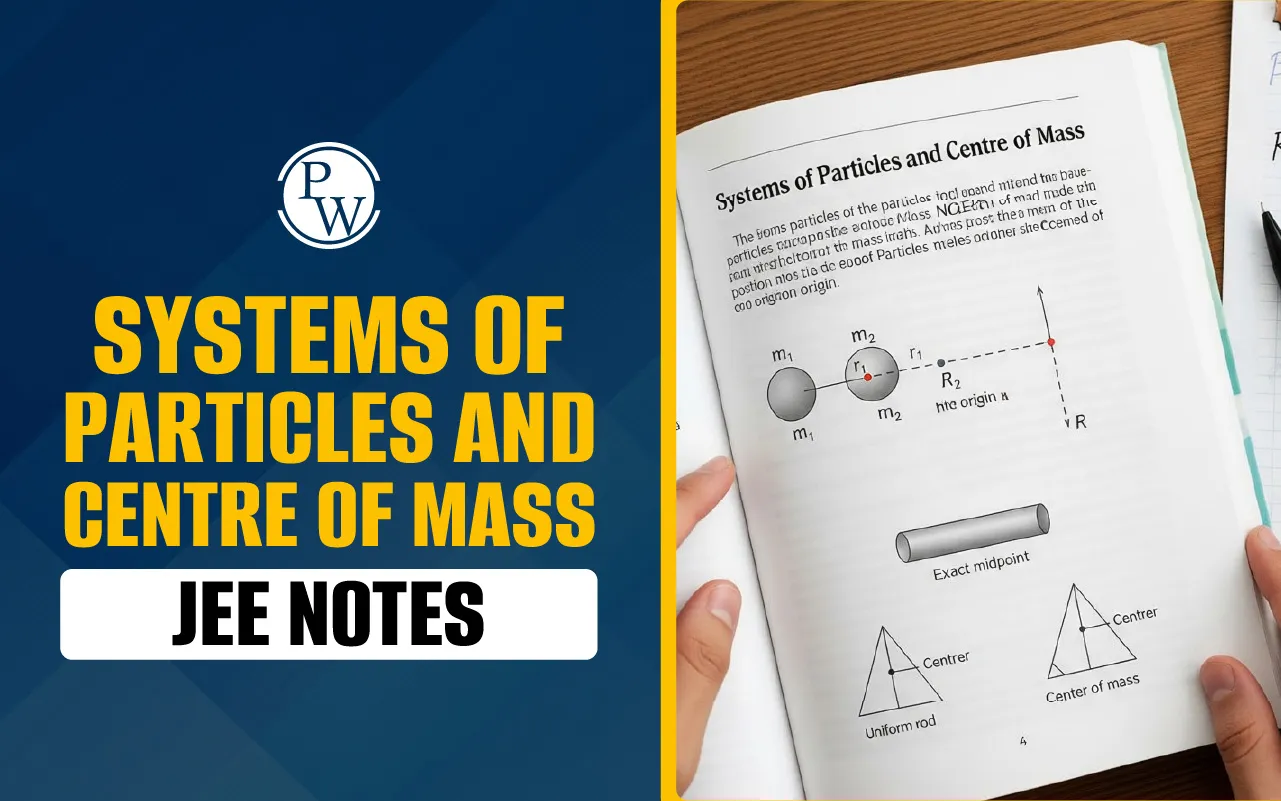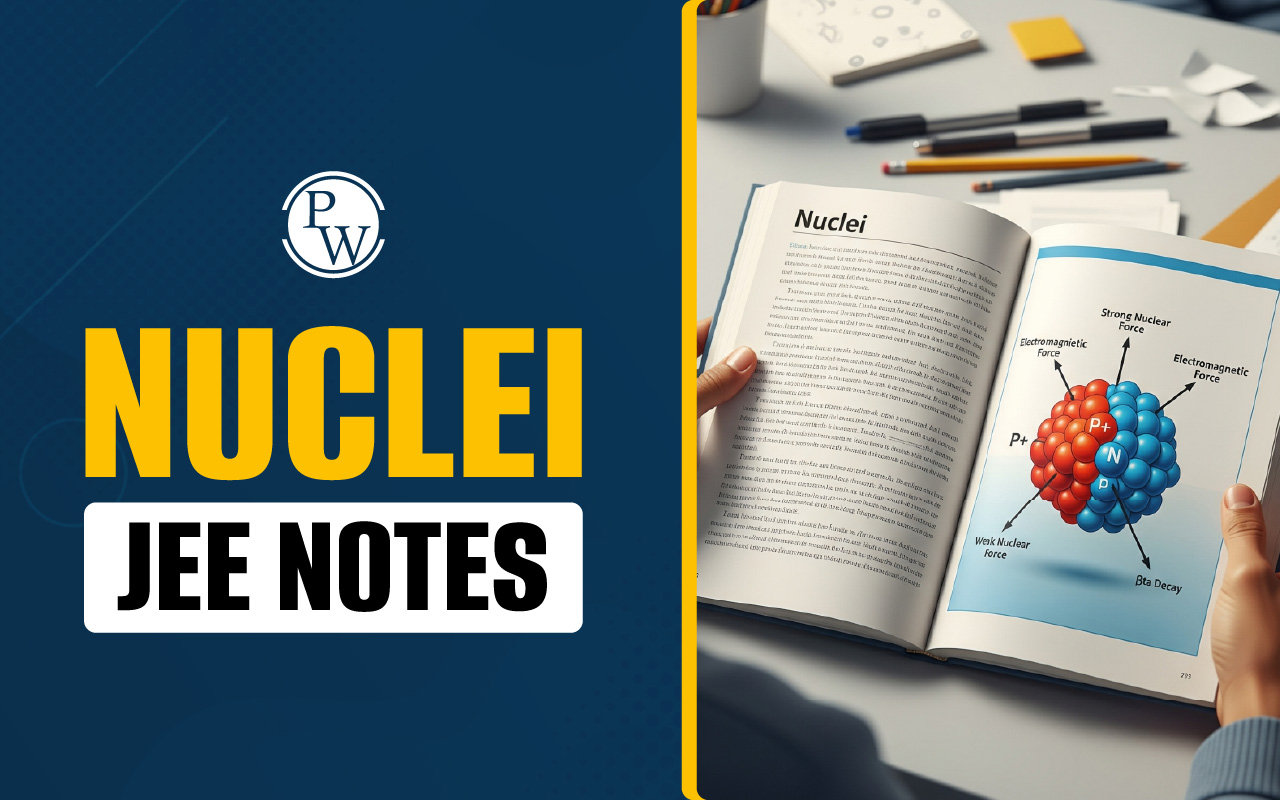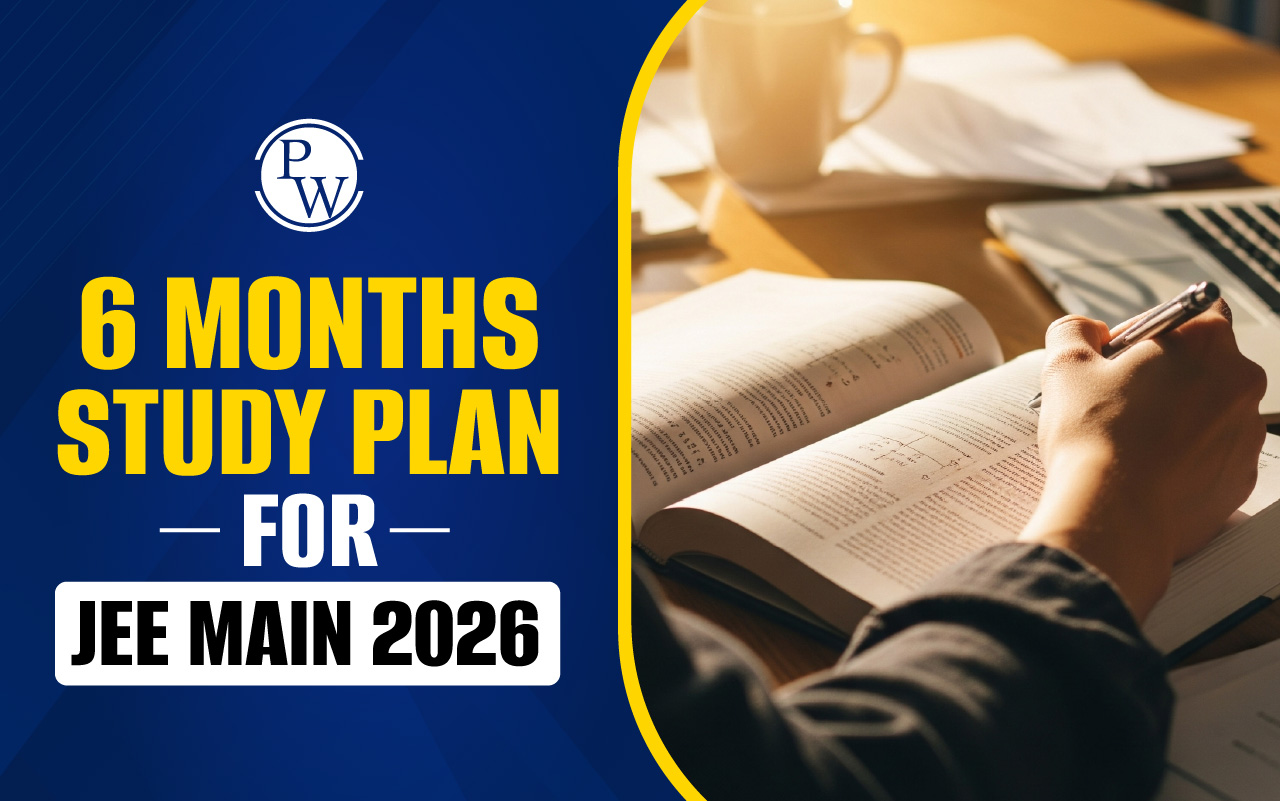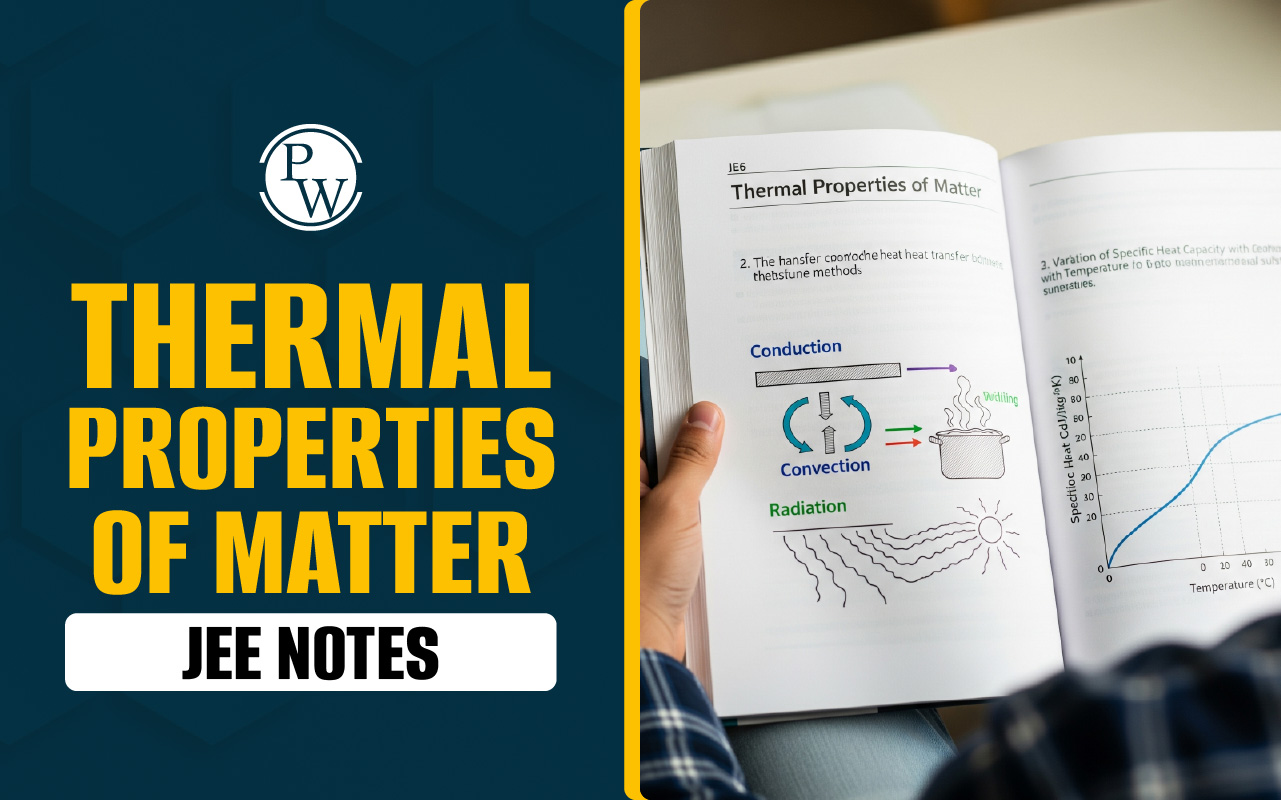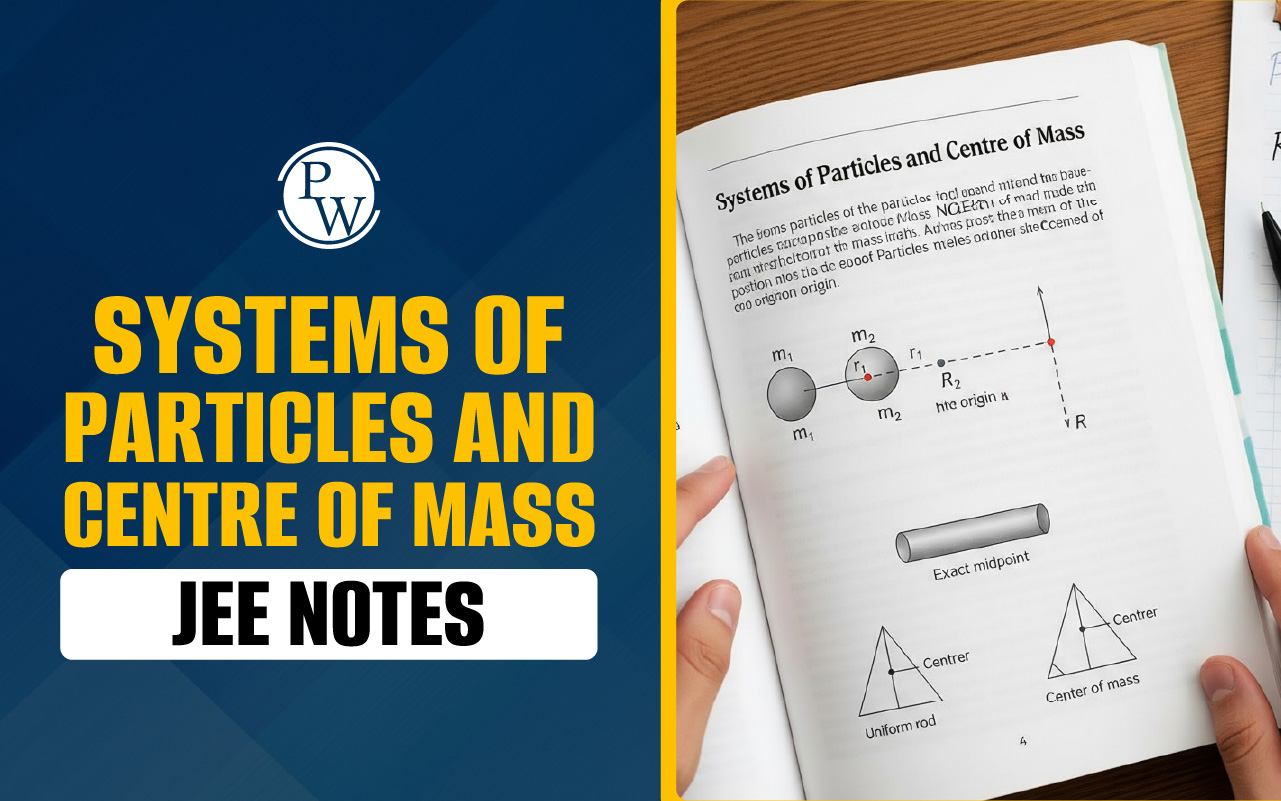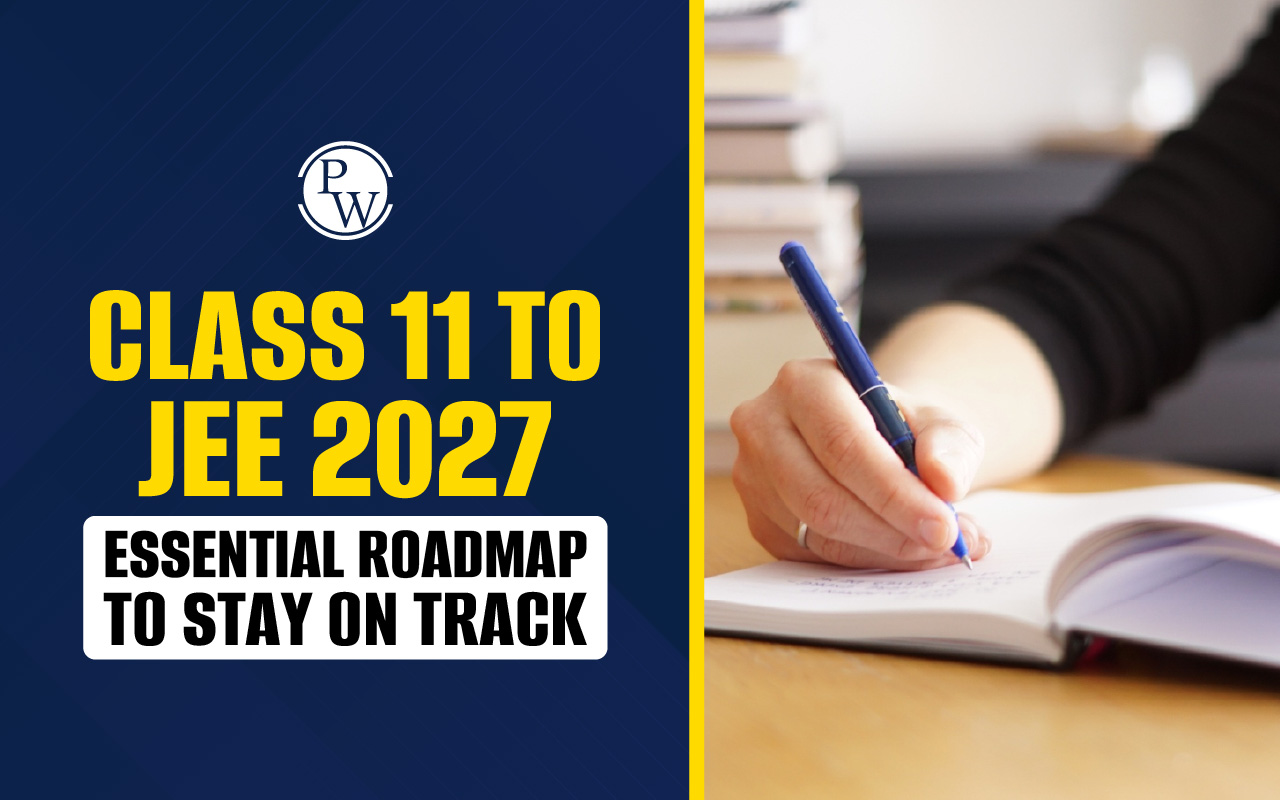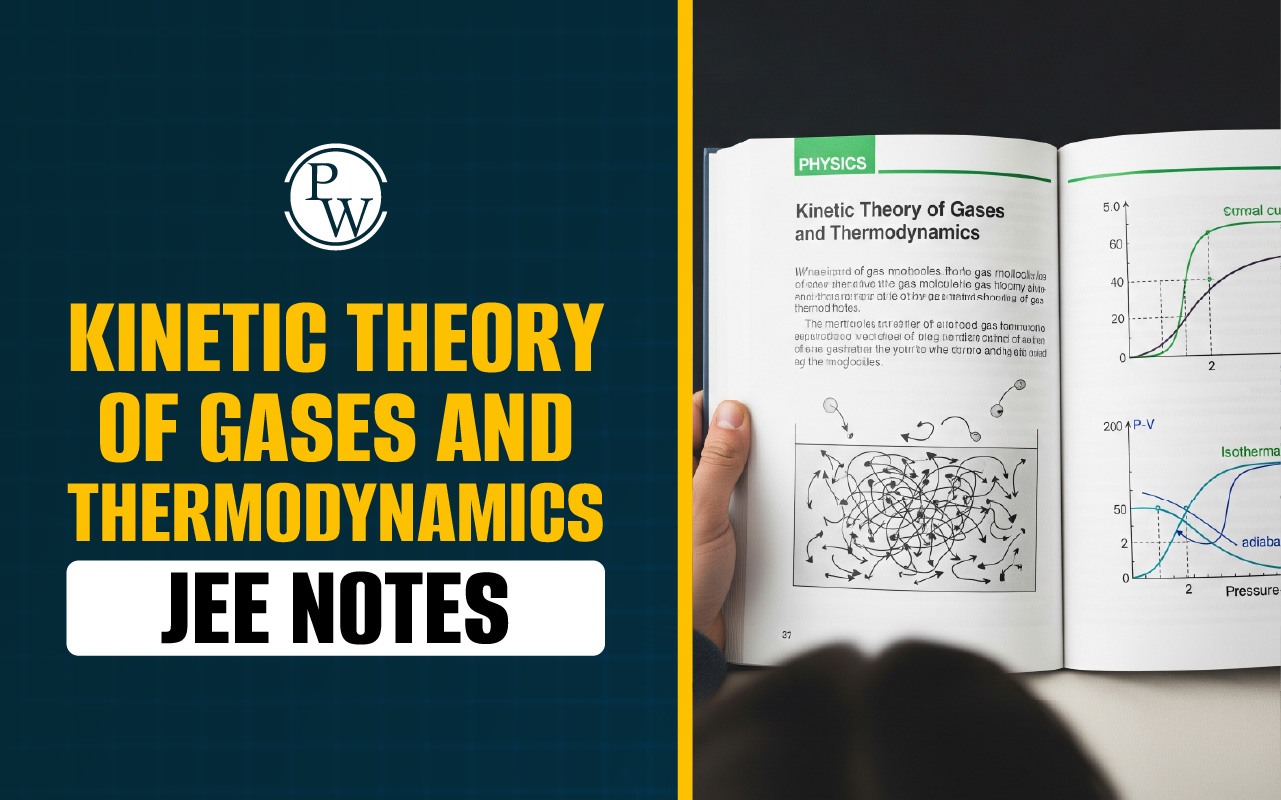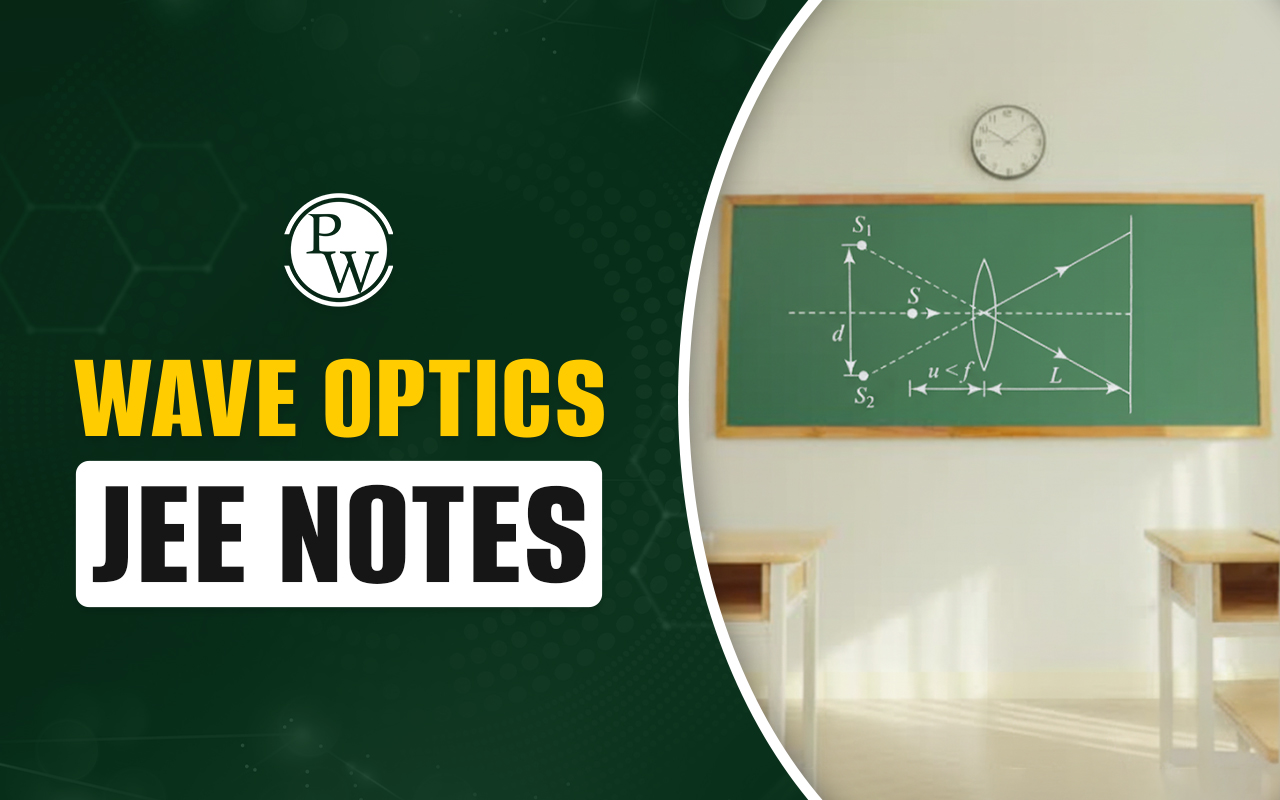
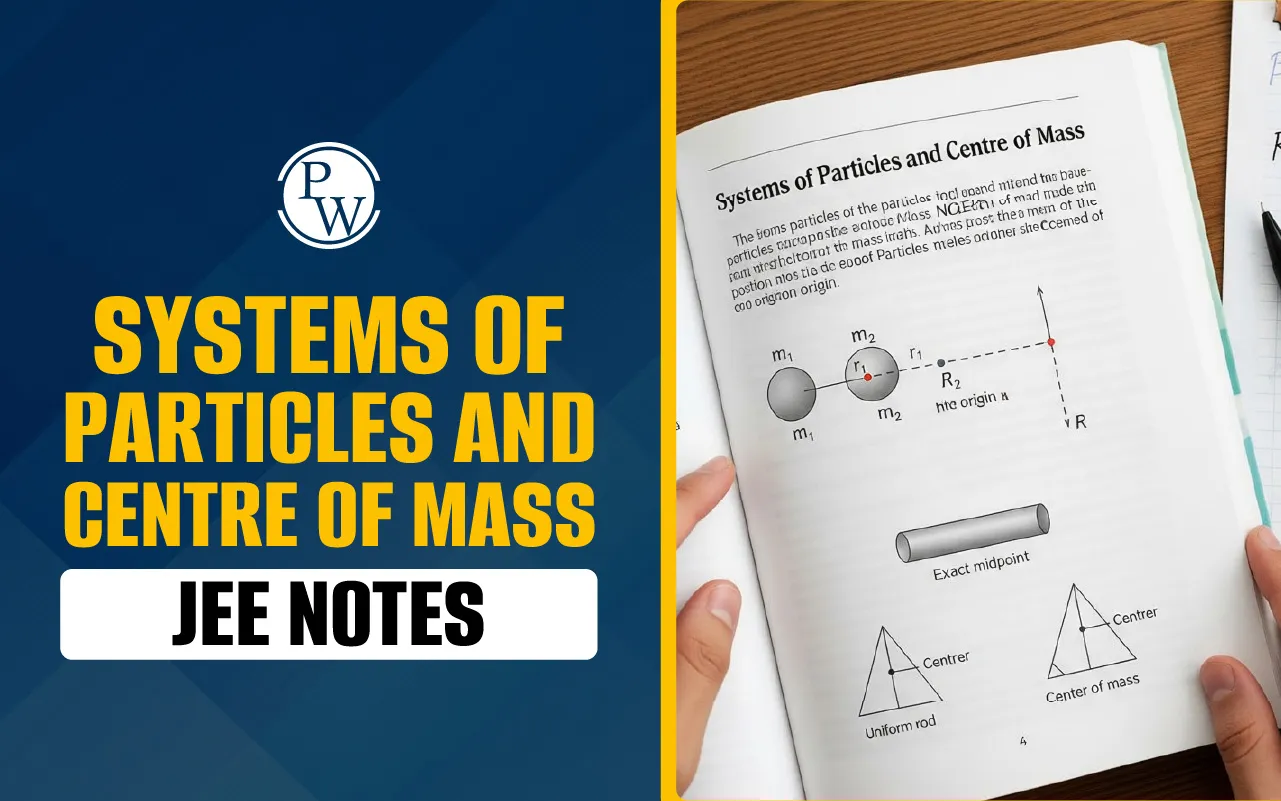
Systems of Particles and Centre of Mass JEE Notes can help JEE aspirants for a guided preparation. Candidates preparing for the JEE examination find the Systems of Particles and Centre of Mass topic challenging due to its combination of vector mechanics, kinematics, and dynamics.
Understanding these concepts is important for solving rotational motion problems. It helps candidates to solve questions in torque and angular momentum JEE notes. Further, students are required to develop a clear conceptual understanding of the centre of mass, motion of multiple particles, and the dynamics of rigid bodies. At the same time, aspirants should be able to solve the system of particles JEE main questions properly.
JEE Main Systems of Particles and Centre of Mass Notes Overview
JEE advanced problems centre of mass frequently test the application of conservation principles and equilibrium conditions. These notes offer structured explanations, step-by-step derivations, and illustrative examples. It allows candidates to enhance their problem-solving skills while gaining confidence in the topic.
Candidates should use the following overview table to get a brief summary of topics and formulas required for the JEE exam. It provides quick access for revision and understanding core concepts.
|
Systems of Particles and Centre of Mass JEE Notes Overview |
||
|---|---|---|
|
Topic |
Subtopics |
Notes |
|
Centre of Mass |
Definition, position vector, motion equations |
Includes examples of discrete and continuous systems |
|
Motion of System of Particles |
Velocity of centre of mass, momentum, kinetic energy |
Covers linear and rotational systems |
|
Conservation Principles |
Momentum and energy conservation in particle systems |
Applications in collisions and explosions |
|
Torque and Angular Momentum |
Definition, torque relation, angular momentum theorem |
Examples in rigid body rotation and central forces |
|
JEE Problems |
JEE Main and Advanced questions on centre of mass |
Solved step-wise, includes past year problems |
|
Numerical Practice |
Derived formulas, sample problems |
Students can use for timed practice and revision |
Note: During preparation of JEE papers, students are advised to refer to each topic in sequence and solve the numerical examples. It will help them to clear their concepts before attempting JEE main questions.
Systems of Particles and Centre of Mass JEE Notes Link
Students who want to appear in the JEE examinations should refer to the reliable sources to download the notes. Downloading notes can help candidates to start early preparations of JEE Mains easily. Here is the direct link of Systems of Particles and Centre of Mass JEE Notes link:
Systems of Particles and Centre of Mass JEE Notes link
Importance of Systems of Particles and Centre of Mass JEE Notes
Understanding JEE Notes system of Particles and Centre of Mass and related topics allows aspirants to address a variety of questions in the exam. Concepts like centre of mass, motion of particle systems, torque, and angular momentum are often interlinked in both JEE Main and Advanced problems. Students should prioritise practising the system of particles JEE main questions. They sometimes require to combine multiple formulas and reasoning steps. At the same time, torque and angular momentum JEE notes form the foundation for rotational dynamics problems that appear in advanced exams frequently.
Furthermore, mastering these notes can help candidates to approach problem-solving systematically. Each derivation, formula, and solved example in this topic contributes to reducing errors during calculations under timed conditions. Furthermore, aspirants should maintain quick, handwritten notes summarising key formulae, which can be used for last-minute revision before examinations.
Weightage of Systems of Particles and Centre of Mass in JEE
Candidates who are engaged in preparing for the JEE paper should be aware of the marks carried by a particular topic. Generally, the weightage of topics remain unchanged for years. Further, here is the indicative weightage of Systems of Particles and Centre of Mass in JEE papers:
|
Weightage of Systems of Particles and Centre of Mass (Indicative) |
||
|---|---|---|
|
Exam |
Approx. Weightage |
Focus Area |
|
JEE Main |
6 to 8% |
Centre of mass, linear momentum, system of particles |
|
JEE Advanced |
8 to 10% |
Rotational motion, torque, angular momentum, complex systems |
|
Practice Tests |
10 to12% |
Mixed problems combining centre of mass with dynamics |
Note: Candidates should note that weightage varies slightly by year, but aspirants should focus on topics that repeatedly appear in past JEE papers and Advanced questions centre of mass.
JEE Advanced Problems Centre of Mass and System of Particles
Students are encouraged to practise past year questions to understand the application of theoretical concepts. Some common problem types include:
-
Finding the centre of mass of discrete and continuous systems
-
Motion of a system of particles under external forces
-
Collisions in one and two dimensions using conservation of momentum
-
Rotational motion problems using torque and angular momentum relations
-
Combined problems linking linear motion and rotational dynamics
Aspirants are required to carefully analyse each problem and understand the step-wise method rather than memorising solutions. These exercises strengthen reasoning skills and build confidence for Advanced-level questions.
Systems of Particles and Centre of Mass JEE Notes FAQs
Who should refer to Systems of Particles and Centre of Mass JEE Notes?
Are Systems of Particles and Centre of Mass Notes sufficient for JEE Advanced-level problems?
Do Systems of Particles and Centre of Mass JEE Notes include torque and angular momentum concepts?
What is the structure of system of particles JEE main questions?
Can these notes be used for last-minute revision?

